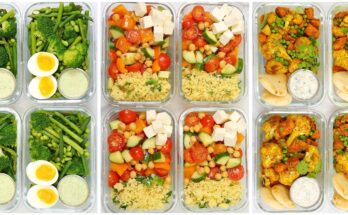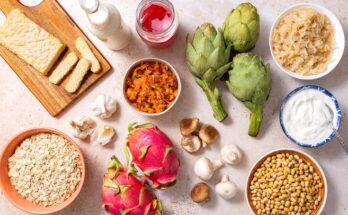Glazed Carrot Recipe: Glazed carrots are one of those classic side dishes that never go out of style. With their naturally sweet flavor enhanced by a shiny, buttery glaze, they can turn any ordinary meal into something special. Whether you’re preparing a holiday feast, a family dinner, or even a simple weeknight meal, glazed carrots bring a burst of color and taste to your plate.
What makes glazed carrots stand out is the perfect balance of sweet and savory. The tender carrots absorb the buttery glaze, creating a melt-in-your-mouth experience with every bite. And the best part? They’re incredibly easy to make. You don’t need to be a professional chef or spend hours in the kitchen to whip up this dish. With just a few basic ingredients and simple steps, you’ll have a restaurant-worthy side dish ready in under 30 minutes.
Let’s explore why glazed carrots are loved worldwide, their history, and the occasions where they shine the brightest.
Why Glazed Carrots Are a Perfect Side Dish
Carrots are naturally versatile—they can be roasted, boiled, sautéed, or eaten raw. But when glazed, they take on a whole new personality. The glaze acts like a shiny coat of flavor, giving the carrots a delicious caramelized finish. This makes them an excellent pairing for roasted meats, grilled chicken, baked fish, or even vegetarian mains like lentil loaf or mushroom risotto.
Another reason glazed carrots work so well as a side dish is their ability to complement both savory and sweet dishes. The buttery glaze tones down the earthy carrot flavor while bringing out its natural sweetness. This balance ensures that glazed carrots appeal to both adults and kids alike, making it a family-friendly recipe.
Moreover, carrots are packed with nutrients like Vitamin A, fiber, and antioxidants, so you’re not just indulging in a tasty side dish—you’re also fueling your body with health benefits.
History and Popularity of Glazed Carrots in Cooking
Glazing vegetables is not a new trend—it dates back centuries. The French technique of “glacer” was used to give vegetables a glossy, appetizing look. Carrots, with their vibrant orange color and natural sweetness, became the ideal candidate for this method. Over time, glazed carrots found their way into kitchens around the world, adapting to different cuisines with variations in spices and flavors.
In American households, glazed carrots gained popularity as a holiday staple, especially during Thanksgiving and Christmas dinners. In Europe, they are often paired with roasted meats or festive feasts. Today, you’ll find glazed carrots on the menu of fine dining restaurants as well as on weeknight dinner tables—proof of their universal appeal.
When to Serve Glazed Carrots – Occasions and Pairings
One of the beauties of glazed carrots is their adaptability. You can serve them on almost any occasion.
- Holiday Feasts: They make an elegant addition to Thanksgiving, Christmas, or Easter spreads.
- Family Dinners: Pair them with roasted chicken, mashed potatoes, and gravy for a comforting meal.
- Special Occasions: They look beautiful on wedding or party buffets thanks to their glossy finish.
- Everyday Meals: Since they’re quick to prepare, you can make them on weeknights to add variety.
For pairings, glazed carrots go exceptionally well with:
- Roasted turkey, chicken, or duck.
- Grilled salmon or baked cod.
- Beef roasts, lamb chops, or pork tenderloin.
- Vegetarian mains like lentil loaf, stuffed peppers, or mushroom pasta.
No matter when you serve them, glazed carrots are sure to impress.
Ingredients You’ll Need
Cooking glazed carrots doesn’t require fancy ingredients—you probably already have most of them in your pantry. The magic happens when these simple items come together to create something extraordinary.
Main Ingredients for Glazed Carrots
Here’s what you’ll need for a basic batch:
- Carrots – Fresh, firm, and preferably medium-sized for even cooking.
- Butter – Adds richness and helps create the glaze.
- Brown Sugar or Honey – Sweetens the dish and gives it a caramel-like flavor.
- Salt – Balances the sweetness and enhances flavor.
- Pepper – Adds a subtle kick.
These five ingredients are enough to make a deliciously classic version.
Optional Add-ons to Elevate the Flavor
If you want to take your glazed carrots up a notch, consider these additions:
- Orange Juice or Zest – For a citrusy, refreshing twist.
- Maple Syrup – A deeper, more complex sweetness.
- Fresh Herbs (like parsley or thyme) – To brighten up the dish.
- Cinnamon or Nutmeg – Warm spices that work especially well for holiday meals.
- Garlic – Adds a savory dimension to balance sweetness.
These variations allow you to customize the recipe based on your taste or the occasion.
Substitutes for Dietary Preferences
Not everyone can enjoy butter or sugar, but don’t worry—glazed carrots can be adapted easily:
- Vegan Option: Replace butter with coconut oil or vegan margarine.
- Sugar-Free Option: Use a natural sweetener like stevia, monk fruit, or agave nectar.
- Low-Fat Option: Reduce the butter amount and add a splash of broth for moisture.
The beauty of this dish lies in its flexibility.
Equipment You’ll Need
Before diving into the cooking process, make sure you have the right tools. You don’t need anything fancy, but a few essentials will make the process smoother.
Basic Kitchen Tools
- Knife and Cutting Board – For peeling and chopping the carrots.
- Vegetable Peeler – To peel the carrots quickly.
- Measuring Cups and Spoons – To measure glaze ingredients accurately.
- Mixing Bowl – Useful if you want to mix glaze ingredients separately before cooking.
Recommended Cookware for Perfect Glazing
- Large Skillet or Sauté Pan – Wide enough to cook carrots evenly.
- Medium Saucepan – Ideal for boiling or steaming carrots before glazing.
- Wooden Spoon or Silicone Spatula – Helps stir without scratching cookware.
With the right tools, cooking becomes stress-free and enjoyable.
Step-by-Step Guide to Making Glazed Carrots
Now comes the fun part—the actual cooking! This recipe is straightforward, but following each step carefully ensures your carrots turn out tender, flavorful, and beautifully glazed.
Step 1 – Preparing the Carrots
Start by washing the carrots thoroughly. Peel off the skin using a vegetable peeler, then cut them into uniform pieces—either sticks, rounds, or diagonally sliced ovals. Keeping them the same size ensures even cooking. If you’re using baby carrots, you can skip the peeling step.
At this stage, you can choose to blanch the carrots in boiling water for a few minutes. This softens them slightly and shortens the cooking time later. Just be sure not to overcook them, as they will continue cooking when glazed.
Step 2 – Making the Glaze
In your skillet or saucepan, melt the butter over medium heat. Once melted, add brown sugar (or honey/maple syrup) and stir until dissolved. The mixture should start to look shiny and smooth. Add a pinch of salt and pepper to balance the sweetness. If you’re using optional flavorings like orange juice or cinnamon, this is the time to add them.
The key is to let the glaze bubble gently until slightly thickened. This process caramelizes the sugar and creates that irresistible shine.
Step 3 – Cooking the Carrots
Add the prepared carrots to the pan with the glaze. Stir gently to coat each piece evenly. Cover the skillet and let the carrots cook on medium-low heat until tender. This usually takes about 10–12 minutes, depending on the size of your carrot pieces.
Be sure to stir occasionally to prevent sticking and ensure even glazing.
Step 4 – Glazing the Carrots
Once the carrots are tender, remove the lid and allow the glaze to reduce further. Stir continuously so the glaze clings to the carrots, giving them that glossy, caramelized finish.
If the glaze seems too thin, keep cooking for a few more minutes. If it’s too thick, add a splash of water or broth to loosen it.
Step 5 – Garnishing and Serving
Finally, transfer your glazed carrots to a serving dish. Sprinkle with fresh herbs like parsley or thyme for color and freshness. A light dusting of nutmeg or a drizzle of extra honey can also elevate the dish.
Serve immediately while warm. The shiny glaze and vibrant color make these carrots not only delicious but also visually stunning on the table.
Tips and Tricks for Perfect Glazed Carrots
Even though glazed carrots are simple to make, a few tips can help you master them every time.
How to Avoid Overcooking
Carrots can go from tender to mushy quickly. To avoid this, check them with a fork as they cook. They should be soft enough to bite into but still hold their shape. Blanching before glazing also helps maintain the right texture.
How to Make the Glaze Stick Properly
The secret is to let the glaze reduce just enough so it clings to the carrots without being watery. Stirring frequently and cooking uncovered toward the end helps achieve this.
Balancing Sweetness and Flavor
If you find your glaze too sweet, balance it with a splash of lemon juice or a pinch of chili flakes. This contrast enhances the overall flavor.
Variations of Glazed Carrots
One of the best things about glazed carrots is how flexible the recipe can be. The base version uses butter and sugar, but you can customize it in countless ways depending on your mood, occasion, or dietary needs. With a few simple tweaks, you can transform this classic dish into something unique every time.
Honey-Glazed Carrots
Instead of brown sugar, try honey. Honey adds a floral sweetness that complements the earthy carrot flavor beautifully. Plus, it gives a lighter glaze and works well for everyday meals.
Maple-Glazed Carrots
For a deeper, more caramel-like flavor, maple syrup is the perfect substitute. It pairs wonderfully with warm spices like cinnamon, nutmeg, or cloves, making it ideal for autumn and winter holidays.
Savory Glazed Carrots
Not a fan of too much sweetness? Balance the glaze with soy sauce or balsamic vinegar. This creates a tangy, umami-packed version that pairs well with grilled meats and roasted vegetables.
Spiced Glazed Carrots
Add warmth by tossing in ground cinnamon, ginger, or cardamom. These spices transform glazed carrots into a comforting dish, perfect for festive occasions.
Citrus-Glazed Carrots
Orange juice and zest brighten up the flavors, giving the carrots a refreshing kick. This version feels light and pairs especially well with fish or poultry.
Herbed Glazed Carrots
For a garden-fresh twist, add herbs like thyme, rosemary, or dill at the end of cooking. The herbs cut through the sweetness and make the dish feel vibrant and fresh.
By experimenting with these variations, you’ll never get bored of glazed carrots. They can easily match any cuisine or season.
Nutritional Value of Glazed Carrots
Glazed carrots aren’t just delicious—they’re also packed with nutrients that your body will thank you for. While the glaze does add some sugar and fat, the overall dish is still a healthy choice when eaten in moderation.
Carrot Benefits
Carrots are a powerhouse of vitamins and minerals. They are especially high in Vitamin A (beta-carotene), which supports good vision, immune health, and glowing skin. They also contain:
- Vitamin K1 – Essential for bone health and blood clotting.
- Fiber – Helps digestion and keeps you feeling full.
- Antioxidants – Protect the body from harmful free radicals.
Nutritional Breakdown (per serving, approx. 1 cup glazed carrots)
| Nutrient | Amount | Benefit |
|---|---|---|
| Calories | 120–150 | Energy boost without being too heavy |
| Carbohydrates | 20–25g | Natural and added sugars for quick energy |
| Fiber | 3–4g | Supports digestion |
| Protein | 1–2g | Helps repair tissues |
| Fat | 5–7g | From butter or oil |
| Vitamin A | 400% Daily Value | Excellent for eyesight |
| Vitamin C | 10% Daily Value | Boosts immunity |
Health Considerations
- If you’re watching sugar intake, swap brown sugar with a natural low-calorie sweetener.
- To cut down fat, reduce butter and use broth to thin the glaze.
- Vegans can substitute with coconut oil or vegan butter.
Glazed carrots strike a good balance between indulgence and nutrition, especially when paired with lean proteins or whole grains.
Common Mistakes to Avoid
Even though glazed carrots are beginner-friendly, a few missteps can ruin the final result. Here are common mistakes and how to avoid them.
1. Overcooking the Carrots
Carrots should be tender but not mushy. Overcooking destroys their texture and dulls the flavor. Always test with a fork—if it slides in easily but the carrot still holds its shape, it’s perfect.
2. Burning the Glaze
Glazes are delicate because sugar burns quickly. Always cook on medium to low heat and stir frequently. If the glaze starts smelling burnt, remove the pan from heat immediately and add a splash of water to save it.
3. Not Reducing the Glaze Enough
If your glaze looks watery, it means you haven’t reduced it long enough. Keep the lid off at the end of cooking and let the liquid evaporate until the carrots are shiny and coated.
4. Using Too Much Sweetener
The natural sweetness of carrots doesn’t need heavy sugar. Overdoing it makes the dish cloying. Stick to the recipe and balance with herbs, spices, or citrus.
5. Skipping Seasoning
Salt and pepper may seem minor, but they’re essential for balance. Without them, your glazed carrots will taste one-dimensional.
By avoiding these mistakes, you’ll end up with glossy, flavorful carrots every single time.
Storage and Reheating Tips
Sometimes, you’ll end up with leftovers (though glazed carrots are usually eaten up quickly!). The good news is, they store and reheat beautifully when handled the right way.
How to Store
- Refrigerator: Place cooled glazed carrots in an airtight container. They’ll stay fresh for up to 3–4 days.
- Freezer: Store in a freezer-safe bag or container for up to 2 months. Keep in mind the texture may soften after thawing.
Reheating Methods
- Stovetop (Best Method): Reheat gently in a skillet over medium-low heat. Add a teaspoon of butter or water if the glaze seems too thick.
- Microwave: Place in a microwave-safe dish, cover loosely, and heat in 30-second bursts until warm. Stir between bursts to prevent uneven heating.
- Oven: Preheat to 350°F (175°C). Place carrots in a covered baking dish and heat for 10–15 minutes until hot.
Pro Tip
If freezing, undercook the carrots slightly before glazing. This helps maintain their texture after reheating.
Serving Suggestions and Pairings
Glazed carrots are versatile and can fit into a wide variety of meals. Their sweet-savory flavor and vibrant appearance make them perfect for both casual dinners and formal occasions.
Pair with Proteins
- Roast Chicken – A comforting, classic combination.
- Beef Roast – The sweetness balances the rich, savory flavors.
- Lamb Chops – A gourmet pairing with herbs and spices.
- Salmon or Cod – The citrusy versions pair beautifully with fish.
Pair with Vegetarian Dishes
- Lentil Loaf or Chickpea Patties – A hearty, plant-based pairing.
- Stuffed Peppers or Mushrooms – Adds brightness to earthy flavors.
- Pasta with Creamy Sauce – Glazed carrots bring a touch of freshness.
Perfect for Holidays
Glazed carrots add color and variety to festive spreads:
- Thanksgiving: Serve alongside turkey and stuffing.
- Christmas: Pair with roast ham or duck.
- Easter: Beautiful with roasted lamb and springtime dishes.
No matter the meal, glazed carrots brighten the plate and delight the palate.
FAQs about Glazed Carrot Recipe
1. Can I make glazed carrots ahead of time?
Yes! You can prepare glazed carrots up to a day in advance. Store them in the fridge and reheat gently on the stovetop with a splash of water or butter before serving.
2. Do I have to peel the carrots?
Peeling is optional. If you’re using baby carrots or fresh garden carrots, just scrubbing them well is enough. The peel adds extra nutrients and a rustic look, but peeled carrots give a smoother texture.
3. Can I use frozen carrots for this recipe?
Absolutely. Just thaw and drain them well before cooking. Keep in mind that frozen carrots may be softer, so reduce cooking time slightly to avoid mushiness.
4. How do I make the glaze less sweet?
If the glaze feels too sweet, balance it with a splash of lemon juice, balsamic vinegar, or even a pinch of chili flakes. This cuts through the sweetness and adds depth.
5. What’s the best way to keep the glaze shiny?
The secret is cooking uncovered toward the end so the glaze reduces and clings to the carrots. Stir frequently to coat evenly, and serve immediately for the best shine.
Conclusion
What makes this recipe special is its flexibility—you can keep it classic with butter and brown sugar, or play around with honey, maple syrup, citrus, or warm spices to suit your taste. Plus, they’re not just delicious but also nutritious, loaded with vitamins, fiber, and antioxidants.
The best part? Glazed carrots require minimal effort, cook quickly, and look absolutely stunning on the table. A dish that’s flavorful, colorful, and healthy—what more could you ask for? So the next time you’re planning your menu, don’t forget to include this timeless side dish. Trust me, it’ll disappear from the plate before anything else.



